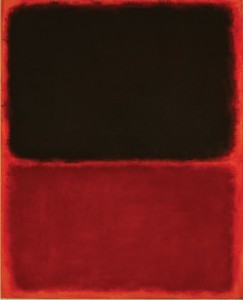People in the art biz have a joke, and it goes something along the lines of:
“Van Gogh created 200 paintings in his lifetime. Of that number, 400 are exhibited in United States museums.”
However, in some sense it’s no joking matter.
In the past few years, fine art has become a huge business where sales prices and profits have skyrocketed into the billion dollar stratosphere. And in a market where massive amounts of money are at play, con artists and grifters skulk about in the dank and dark shadows.
The new question is “is it really real?”
One casualty was the famous 160 year old Knoedler & Company gallery. They were forced to close its Manhattan silk stocking district doors in 2011 amid reports that it had been innocently duped into selling some 40 fake paintings for over $63mm.
It turns out that the sold paintings were excellent quality fakes produced by Pei-Shen Qian, an immigrant from Shanghai, China, with no intention to market them as the originals. Instead, he was paid a few thousand dollars each for fake works which were ultimately passed off as originals by swindlers.
The Knoedler fiasco notwithstanding, help is generally not needed to authenticate the known works from the masters which sell for millions.
Rather, it’s the market for lesser works, namely, those pieces selling for six figures or less, where authenticity certification is essential. Without ready access to certification, lingering questions as to authenticity can defeat sales, scuttle value and have a chilling effect on the market.
So, enter the artist foundations. They were intended as the first line of defense to combat fraud; at least until civil suits started to land on their doorstep.
Foundations were created by famous artists, or their families, to help protect the legacy of the artist, and also the financial interest of the artist and his heirs. In theory, the artist’s foundation passes on the authenticity of a given work so as to protect the integrity of the artist’s body of work. But that’s only the theory. In practice, the results have not been as planned.
Hypothetically consider that you run an artist’s foundation and a collector submits a piece to you for authentication. You can either authenticate or reject the piece. If you endorse the piece as genuine and it turns out to be a fake, you can expect to be sued by the purchaser.
On the other hand, if you reject the piece as fake, then you can expect to be sued by the seller for disparagement of the work and diminishment of its value. With the ever present sword of Damocles hovering over the artist foundations, it was no small wonder that many left the authentication business soon after they entered.
The Andy Warhol Foundation for the Visual Arts is a good example.
By 2011, it had incurred close to $7mm in legal fees in a single case defending its rejection of an alleged $200k piece brought to them by Joe Simon-Whelan. The foundation won its case in Court, but the cost to get there in our litigious society was illuminating. It closed its short-lived authentication board.
The Keith Haring Foundation soon ceased their authentication activities as well. Jean-Michel Basquiat’s estate likewise closed its authentication board in 2012.
Of course, the huge monetary benefits can also tempt the foundations in morally questionable, even if legal, ways. The ability to authenticate a valuable work is almost like running a printing press for money.
In a rising fine art market, a foundation’s stamp of authentication can multiply the value of a given piece many times over, and foundations have been known to capitalize on this unique opportunity for their own benefit, and at the expense of collectors. (See, for example, our blog post “Leggo of My Eggle..ston”: http://wasserruss.com/news/leggo-of-my-eggle-ston
Art lawyers located in New York have been lobbying for changes to the New York statutes whereby artist foundations would have certain protections from claims and litigation for authentication opinions offered in good faith. The hope is that such protection would tempt artist foundations back into the authentication business and provide stabilizing market influences. Until then, the laws of the Wild West may well apply.
Anyone out there want to buy a Van Gogh?

